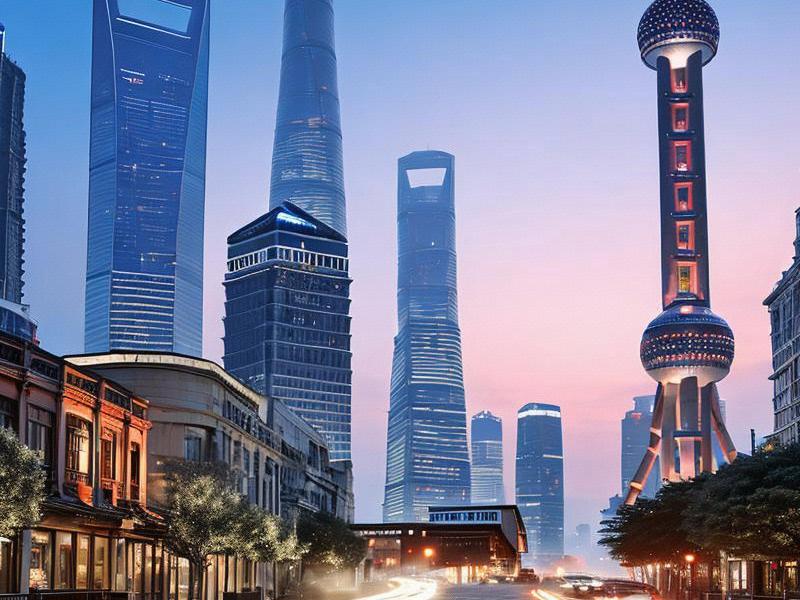Shanghai's Vibrant Cultural Mosaic: An Amalgamation of Past and Present
⏱ 2025-05-01 00:09 🔖 上海龙凤419
📢0℃

Nestled on the banks of the Huangpu River, Shanghai stands as a beacon of China's rapid urbanization and economic transformation. Yet, amidst the gleaming skyscrapers and bustling streets, the city has meticulously preserved its cultural heritage, creating a unique fusion of past and present. This cultural mosaic is not just a testament to Shanghai's historical significance but also a reflection of its dynamic spirit.
The history of Shanghai is deeply intertwined with its position as a major port city. Since the 19th century, Shanghai has been a melting pot of cultures, attracting merchants, missionaries, and adventurers from around the world. The Bund, with its colonial-era architecture, stands as a vivid reminder of this era. The juxtaposition of Gothic spires and Art Deco facades against the backdorpof the modern skyline is a visual metaphor for Shanghai's historical continuity and forward momentum.
The city's cultural identity is further enriched by its indigenous traditions. The intricate patterns of Suzhou embroidery, the delicate notes of the erhu, and the vibrant performances of traditional Chinese opera are all integral to Shanghai's cultural fabric. These art forms, passed down through generations, continue to thrive, adapting to contemporary tastes while retaining their authenticity.
In recent decades, Shanghai has emerged as a global cultural hub, hosting international festivals, art exhibitions, and fashion shows. The city's commitment to cultural exchange is evident in landmarks such as the Shanghai Museum, which houses an impressive collection of Chinese art, and the Shanghai Grand Theatre, a venue for world-class performances. These institutions not only showcase Shanghai's own cultural treasures but also serve as platforms for international artists to share their work with a global audience.
阿拉爱上海
The blending of traditional and modern elements is particularly evident in Shanghai's culinary scene. The city is renowned for its innovative take on traditional Chinese cuisine, with dishes that combine classic flavors with contemporary techniques. From the Michelin-starred restaurants of the French Concession to the bustling night markets, Shanghai offers a culinary experience that reflects its cultural diversity.
The city's architecture is another striking example of this cultural fusion. The historic Yu Garden, a classical Chinese garden, stands in harmony with the futuristic skyline of Lujiazui, home to the iconic Oriental Pearl Tower and the Shanghai Tower. This juxtaposition of old and new is not just a visual spectacle but also a metaphor for Shanghai's ability to embrace change while honoring its heritage.
Shanghai's cultural vibrancy is also reflected in its vibrant arts scene. The city is home to numerous galleries, theaters, and music venues that showcase both traditional and contemporary art forms. The Shanghai International Film Festival, one of the oldest and most prestigious film festivals in Asia, attracts filmmakers and audiences from around the world, further cementing Shanghai's status as a cultural capital.
爱上海同城419
The city's commitment to cultural preservation is evident in its efforts to protect and restore historical sites. The Nanjing Road Pedestrian Street, a bustling shopping district, is lined with buildings that date back to the early 20th century. These structures, now home to modern shops and restaurants, serve as a reminder of Shanghai's rich history while meeting the needs of contemporary urban life.
Shanghai's cultural mosaic is not without its challenges. The rapid pace of urbanization has led to concerns about the loss of historical sites and the homogenization of culture. However, the city has taken proactive measures to address these issues. Initiatives such as the Shanghai Cultural Relics Protection and Utilization Demonstration Zone aim to strike a balance between development and preservation.
The future of Shanghai's culture lies in its ability to continue this delicate balance. As the city continues to grow and evolve, it must ensure that its cultural heritage remains a source of pride and identity for its residents. This requires a commitment to preserving historical sites, supporting traditional art forms, and fostering a culture of innovation and creativity.
上海龙凤sh419
The global relevance of Shanghai's culture is also shaped by its role as a hub for international exchange. The city's openness to the world has made it a meeting point for diverse cultures, ideas, and traditions. This cosmopolitan spirit is reflected in the city's welcoming attitude towards foreign artists, businesses, and visitors, who contribute to the rich tapestry of Shanghai's culture.
In conclusion, Shanghai's vibrant cultural mosaic is a testament to the city's unique ability to blend its historical roots with modern advancements. From its colonial-era architecture to its contemporary art scene, Shanghai offers a rich and dynamic cultural experience that reflects its history, diversity, and forward-looking vision. As the city continues to grow, its cultural heritage will remain a cornerstone of its identity, ensuring that Shanghai remains a beacon of cultural excellence on the global stage.
The story of Shanghai is one of resilience, adaptability, and innovation. It is a city that has not only preserved its past but also embraced the future with open arms. This duality is what makes Shanghai such a fascinating and inspiring place, a true cultural capital that bridges the gap between tradition and modernity. Whether you are strolling through the historic streets of the French Concession, savoring the flavors of a Shanghainese meal, or marveling at the city's futuristic skyline, Shanghai offers an unforgettable cultural experience that is truly one of a kind.
Shanghai's Pan-Yangtze Synergy: Engineering a New Urban Civilization【长三角新格局】2025上海大都市圈融合发展白皮书Shanghai's Green Revolution: How China's Megacity is Leading the Sustainable Urban FutureShanghai's She-Economy: How the City's Women Are Leading China's Business RevolutionShanghai's Journey to Becoming a Global Innovation HubShanghai's Nightlife Renaissance: How Premium Clubs Are Redefining Urban EntertainmentShanghai's Techno-Cultural Tapestry: Weaving Blockchain, AI, and Imperial LegacyThe Evolution of Shanghai's Nightlife: How Entertainment Venues Are Redefining Urban LeisureThe Velvet Rope Economy: Inside Shanghai's Exclusive Nightlife RenaissanceNeon Renaissance: Shanghai's High-End Club Culture in the Post-Pandemic Era
海派烟火眉:上海美女的市井诗行与精神注脚《霓虹深处:南京东路百年商业街的进化论》《百乐门到元宇宙:上海娱乐会所进化论》霓虹与檀香:上海高端会所三十年文化流变"四段式模板
7. 历史参考:前两篇分别以"感官革命"和"时空折叠"为切入点,本次需创新视角
8. 时效元素:当前为2025年,可融入AI、元宇宙等现代科技元素
9. 价值导向:展现独立、智慧的当代上海女性形象,规避物化倾向
以下是符合要求的深度特稿:《梧桐树下的方程式:95后女科学家与旗袍实验室的双城记》《石库门密码:上海里弄建筑的时空折叠》《石库门里的时光标本》《梧桐树下的城市镜像》梧桐区镜像:上海女性的空间叙事与身份建构
空间修辞,身体政治,时尚语法,记忆拓扑,社群算法

